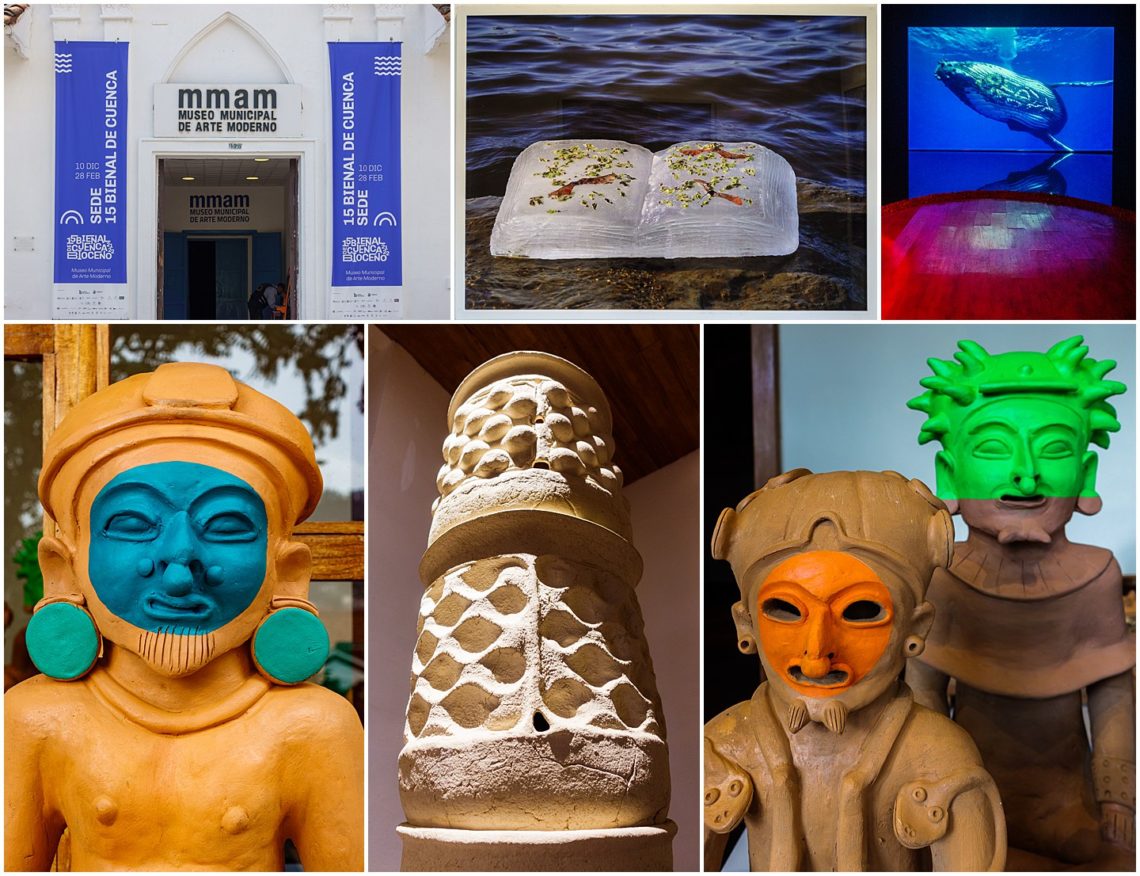
The Biennial is an international art event held worldwide every two years. It is held in 50 cities, including Venice, Havana, Singapore, Prague, Beijing, Sao Paulo, Barcelona, plus others. Due to Covid, the 15th Bienal de Cuenca was postponed from 2020 and instead runs from December 10, 2021 through February 28, 2022. This year’s Biennial event is substantially scaled down, and has not been well promoted.
As a result, the exhibits in Cuenca have generally been quite small this year with the theme of nature and sustainability. The Spanish curator of the show, Blanca De la Torre, chose the participants for the current show, based upon his perception of the artists alignment with that theme.
There were many small films depicting a bleak environmental future, extinction, as well as art created from recycled materials. One display is a frozen book series (top-middle) created by an American artist, Basia Irland, located at the Museum of Modern Art, located at San Sebastian Plaza.
The bottom row of images are of ceramic pre-Colombian art, displayed at the Museo Remigio Crespo on Calle Larga. The artist and archaeologist, Pamela Cevallo, shows the pottery work of a village La Pila (Manabi), using techniques from 2500 years ago. The faces are painted (bottom-left and bottom-right) to help distinguish the copies from the authentic statues, since it is illegal to sell antiquities in Ecuador.
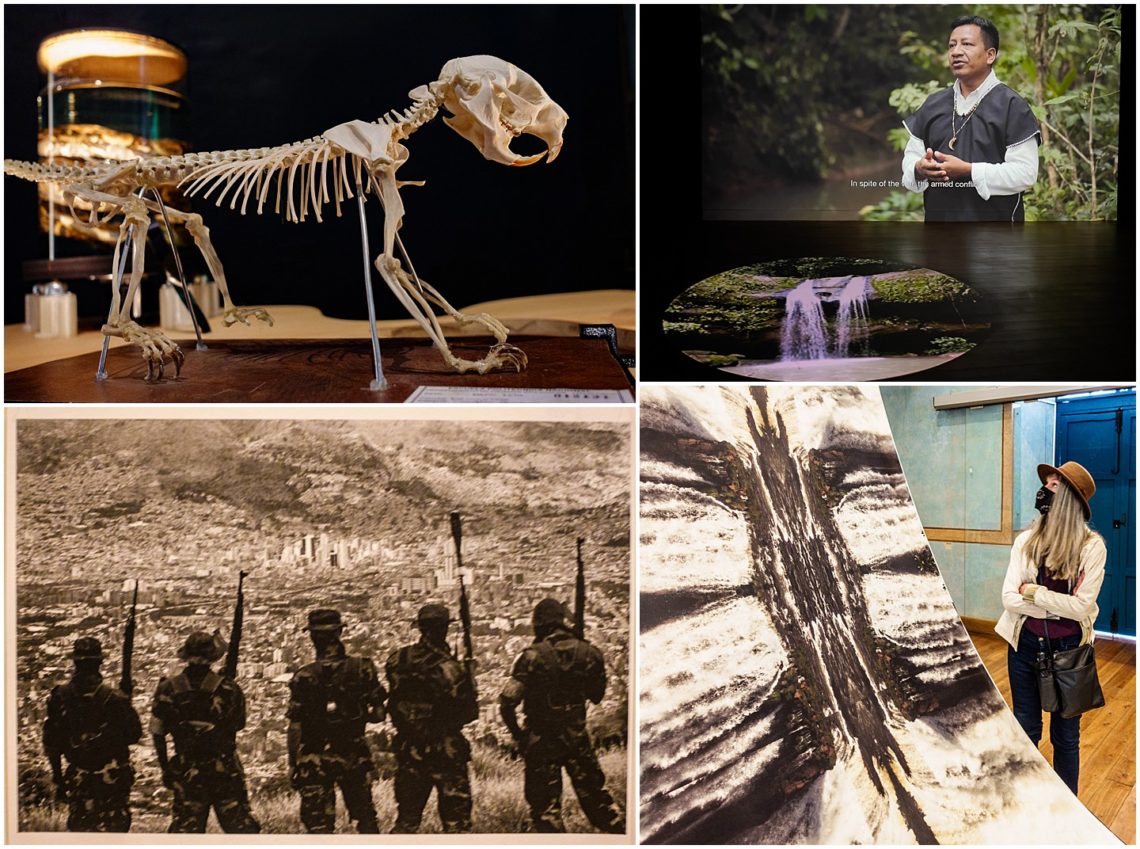
A map of the artists and display locations can be found by clicking here. We recommend reviewing the description of the the 34 artists, then using the map to route which of the 15 exhibits are of interest.
Fabiano Kueva from Ecuador won first place, Tania Candiani from Mexico received second place, and Christian Lucas from Spain was awarded third place.
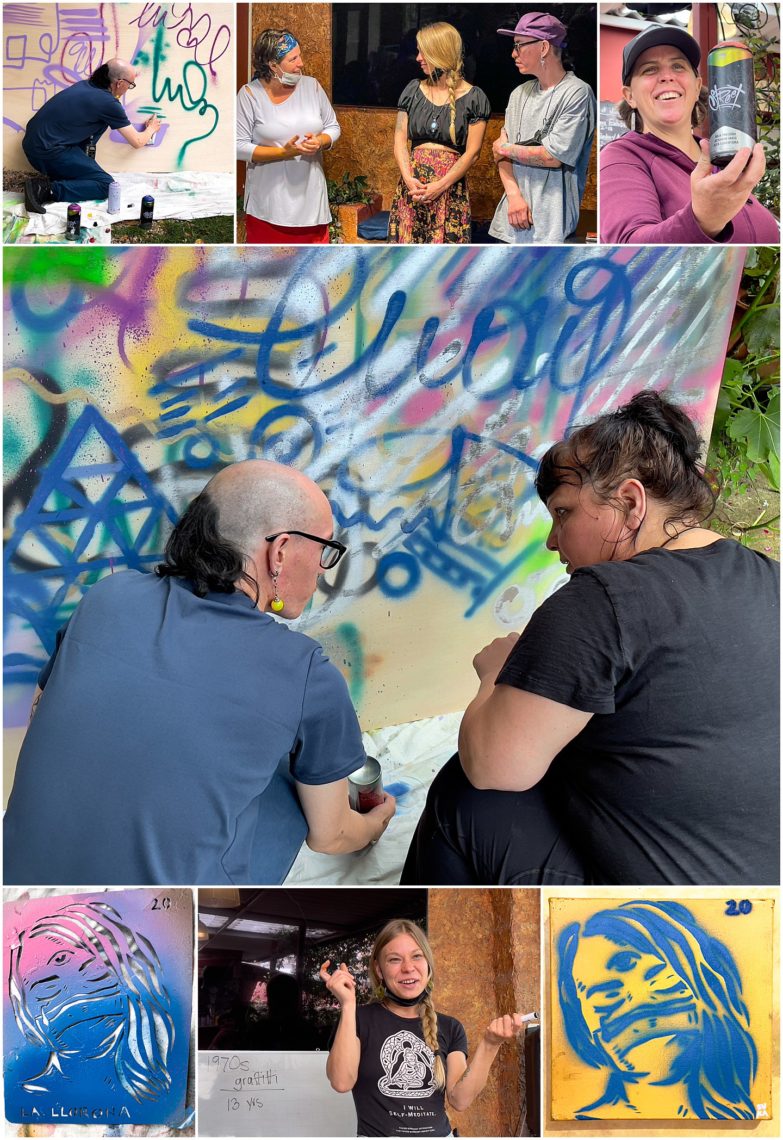
Many people are not aware that urban art (which combines street art and graffiti) can be a highly developed skill, and a form of visual art “expression” in urban areas. When poorly done and without permission, they are often viewed as vandalism and destruction of public property. However, they can also be forms of art that entertain the public and become attractions that draw tourism, when done properly.
A month-long art exhibit was shown with works by Topher Man (top-left) and Suka (bottom-middle) at IdiomArt located at Presidente Cordova 1-77. IdiomArt is now directed by Sarah HB (Hanenbauer) (top-right), who has raised the bar for Creative Art Centers and has elevated the art scene in Cuenca.
Robert Bradley recently wrote an article for CuencaHighLife on the new leadership at IdiomArt.
The bottom-right painting by Suka was made from a stencil, shown bottom-left. As part of the workshop, Suka showed the class how to make stencils cut from plastic or X-ray film, that can be then be sprayed onto walls as part of graffiti art.
Suka presented a short history noting that urban art began in the Brooklyn Bushville area in the 1970s. Suka stated that to be successful, a street artist has to remain “detached” from their creations, as it is common that other graffiti artists will spray paint over their art.
Interestingly, we have seen murals in Valparaiso, Chili (part 1 and part 2), and Bogota, Colombia, where it would be blasphemous to tag or deface the works of revered street artist by the graffiti culture. In those cities, the only defacing tagging is done on walls with no murals.
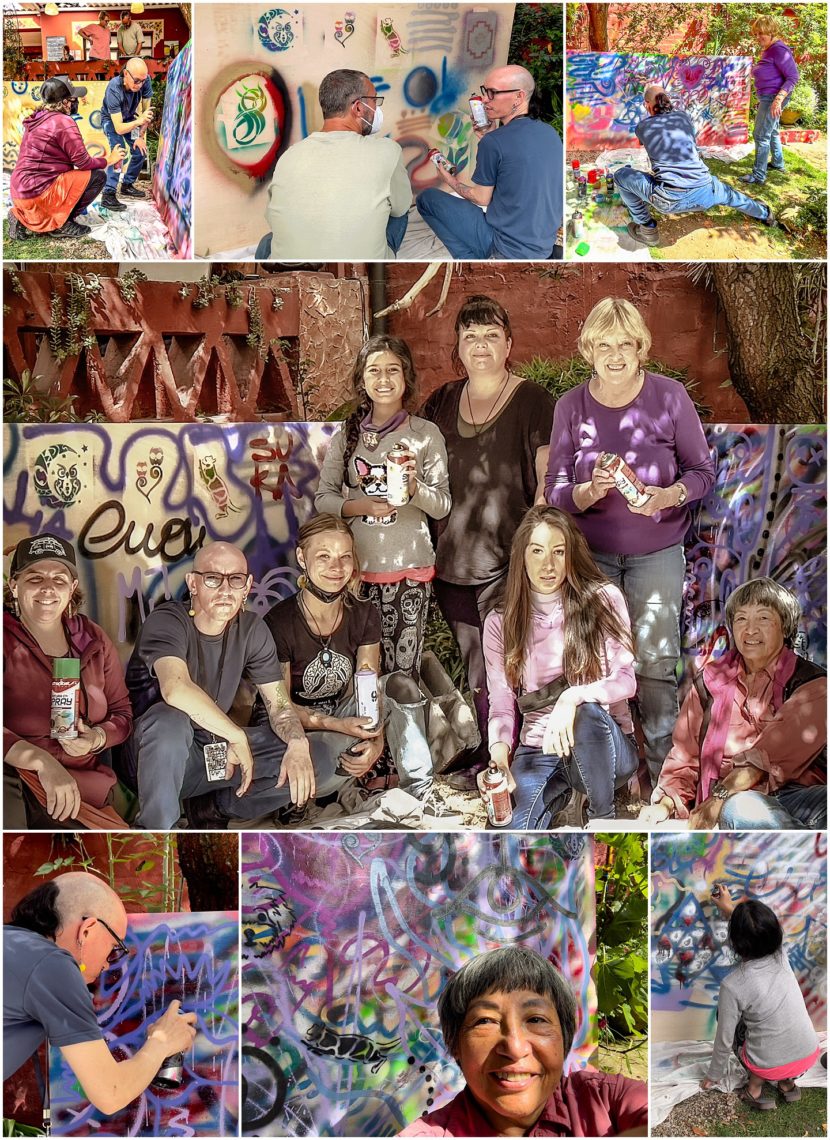
In the afternoon, Topher Man discussed various brands of spray paint cans, ranging from the inexpensive $2 cans from Coral to higher quality $6 cans. Then Topher Man demonstrated how to make thin and thick lines using the many variations of spray paint nozzles from low pressure to high pressure to create gradations, signatures, and various line work. It was clear that muralists, such as Topher Man, are highly skilled artists.

When we walked around Cuenca, we saw that there have been many new murals created. Along Solano Avenue at the school (bottom-right), there is a complete wall section that is signed by a number of different artists. A new art neighborhood along Calle Mariscal Lamar across from La Guarida Restaurant shows the works (middle-left) of Eduardo Segovia, renown Ecuadorian ceramicist.

During this pandemic period, many of the art galleries that we visited were mostly empty. We visited the Miguel Illescas Gallery, the Olmedo Quimbita Gallery, Arrebol Artespacio, plus several others that have quality art.
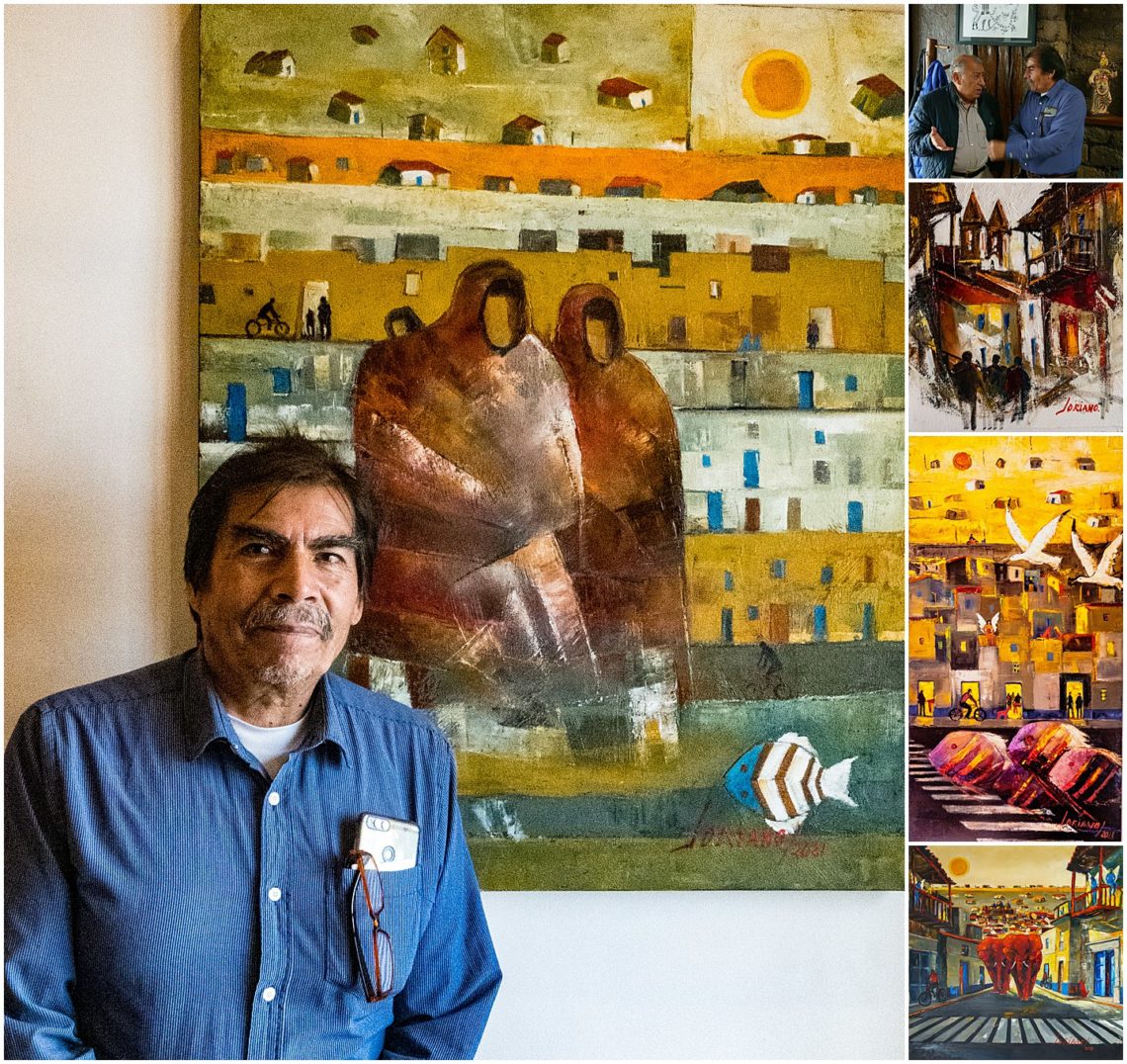
Alberto’s reception was well attended, but the attendees were there for the food and socializing at La Guarida Restaurant, rather than for the art. The guest gallery is tucked into a small secondary venue that is easily missed. The larger main gallery displayed the works of Eduardo Segovia, the renown ceramicist.
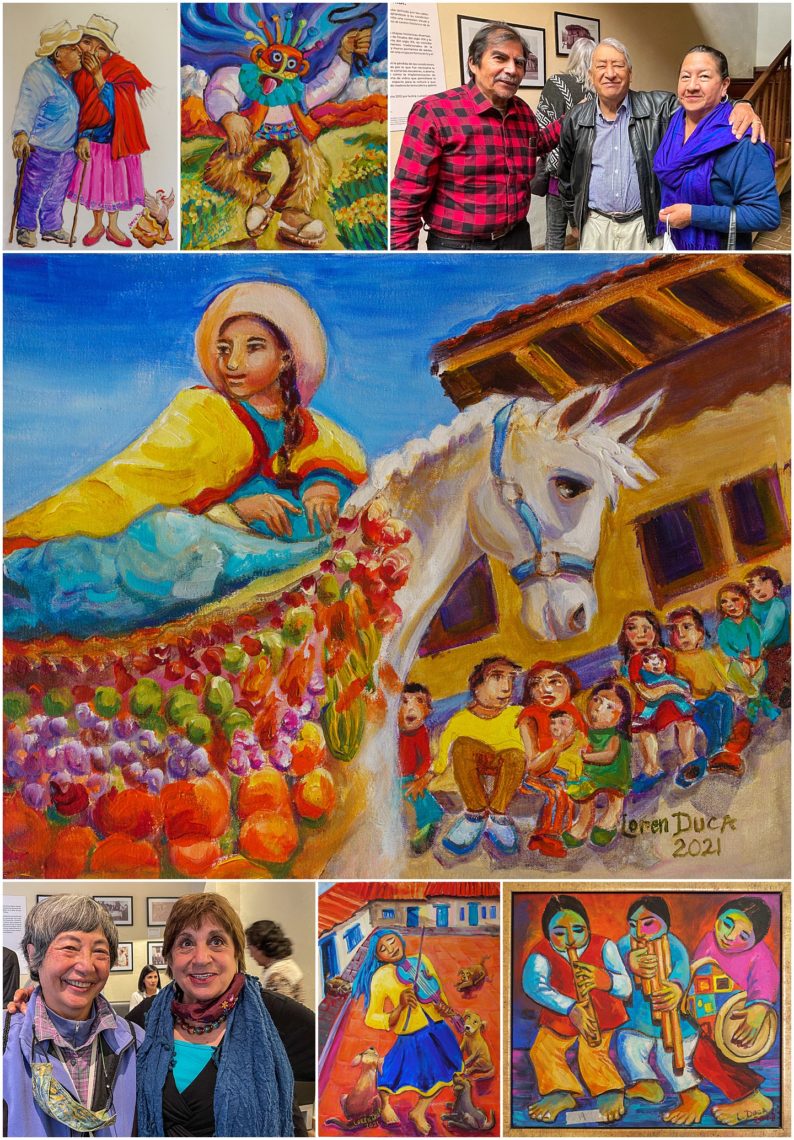
Lorena Duca’s reception was held at a cultural arts museum, Museo Alfarero, and quite well attended by art enthusiasts.